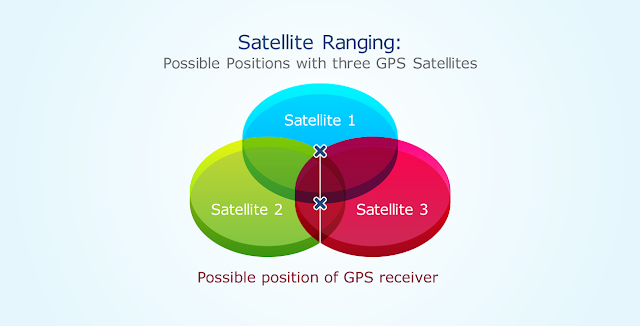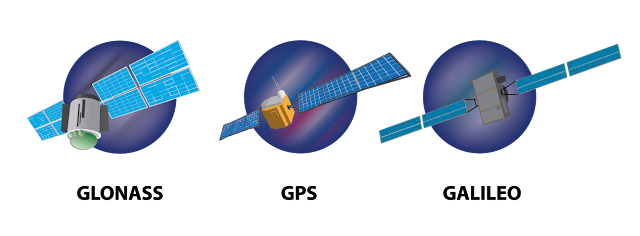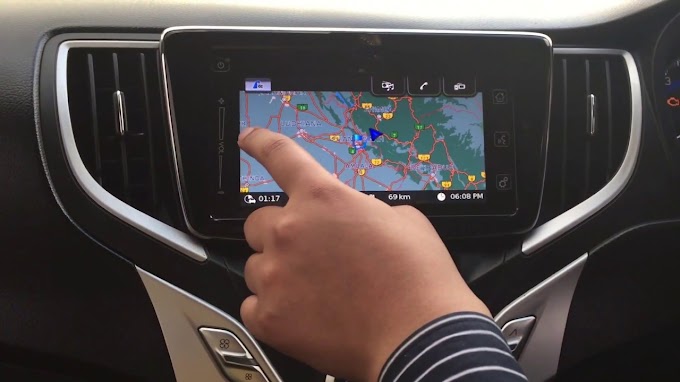Discover everything you need to know about GPS and how it is used today.
GPS, or the Global Positioning System, is a worldwide route satellite framework that gives area, speed and time synchronization.
GPS is all over. You can discover GPS frameworks in your vehicle, your cell phone and your watch. GPS encourages you get where you are going, from guide A toward point B. What is GPS? Peruse this article to become familiar with how it functions, its set of experiences and future headways.
What is GPS and how does it work?
The Global Positioning System (GPS) is a route framework utilizing satellites, a collector and calculations to synchronize area, speed and time information for air, ocean and land travel.
The satellite framework comprises of a star grouping of 24 satellites in six Earth-focused orbital planes, each with four satellites, circling at 13,000 miles (20,000 km) above Earth and going at a speed of 8,700 mph (14,000 km/h).
While we just need three satellites to create an area on earth's surface, a fourth satellite is frequently used to approve the data from the other three. The fourth satellite additionally moves us into the third-measurement and permits us to compute the elevation of a gadget.
What are the three elements of GPS?
GPS is comprised of three unique parts, called sections, that cooperate to give area data.
The three sections of GPS are:
Space (Satellites) — The satellites circumnavigating the Earth, sending signs to clients on geological position and season of day.
Ground control — The Control Segment is comprised of Earth-based screen stations, ace control stations and ground recieving wire. Control exercises remember following and working the satellites for space and observing transmissions. There are checking stations on pretty much every landmass on the planet, including North and South America, Africa, Europe, Asia and Australia.
Client hardware / Equipment — GPS beneficiaries and transmitters including things like watches, cell phones and telematic gadgets.
How does GPS technology work?
GPS works through a strategy called trilateration. Used to ascertain area, speed and rise, trilateration gathers signals from satellites to yield area data. It is frequently confused with triangulation, which is utilized to quantify points, not distances.
Satellites circling the earth impart signs to be perused and deciphered by a GPS gadget, arranged on or close to the world's surface. To compute area, a GPS gadget should have the option to peruse the sign from at any rate four satellites.
To Know more details about GPS >>> Check Here <<<
Each satellite in the organization circles the earth double a day, and each satellite imparts a one of a kind sign, orbital boundaries and time. Out of the blue, a GPS gadget can peruse the signs from at least six satellites.
A solitary satellite transmissions a microwave signal which is gotten by a GPS gadget and used to compute the separation from the GPS gadget to the satellite. Since a GPS gadget just gives data about the separation from a satellite, a solitary satellite can't give a lot of area data. Satellites don't emit data about points, so the area of a GPS gadget could be anyplace on a circle's surface zone.
At the point when a satellite imparts a sign, it makes a circle with a sweep estimated from the GPS gadget to the satellite.
At the point when we add a subsequent satellite, it makes a subsequent circle, and the area is limited to one of two focuses where the circles cross.
With a third satellite, the gadget's area can at long last be resolved, as the gadget is at the crossing point of each of the three circles.
All things considered, we live in a three-dimensional world, which implies that each satellite creates a circle, not a circle. The convergence of three circles produces two purposes of crossing point, so the point closest Earth is picked.
Here is an illustration of satellite ranging:
As a gadget moves, the span (distance to the satellite) changes. At the point when the range changes, new circles are created, giving us another position. We can utilize that information, joined with the time from the satellite, to decide speed, ascertain the distance to our objective and the ETA.
What are the uses of GPS?
S is an amazing and reliable device for organizations and associations in a wide range of ventures. Assessors, researchers, pilots, boat chiefs, specialists on call, and laborers in mining and horticulture, are only a portion of individuals who use GPS consistently for work. They use GPS data for getting ready exact reviews and guides, taking exact time estimations, following position or area, and for route. GPS works consistently and in practically all climate conditions.
There are five primary employments of GPS:
Location — Determining a position.
Navigation — Getting starting with one area then onto the next.
Tracking — Monitoring article or individual development.
Mapping — Creating guides of the world.
Timing — Making it conceivable to require some investment estimations.
Some particular instances of GPS use cases include:
Crisis Response: During a crisis or catastrophic event, people on call use GPS for planning, following and anticipating climate, and monitoring crisis staff. In the EU and Russia, the eCall guideline depends on GLONASS innovation (a GPS option) and telematics to send information to crisis administrations on account of a vehicle crash, decreasing reaction time. Peruse more about GPS following for specialists on call.
Hurry up get your GPS Map Today For Additional Discount >>> Click Now <<<
Entertainment: GPS can be consolidated into games and exercises like Pokémon Go and Geocaching.
Health & Fitness: Smartwatches and wearable innovation can follow wellness action, (for example, running distance) and benchmark it against a comparable segment.
Development, mining and off road tracking: From finding hardware, to estimating and improving resource allotment, GPS empowers organizations to build return on their resources. Look at our posts on development vehicle following and rough terrain gear following.
Transportation: Logistics organizations execute telematics frameworks to improve driver profitability and security. A truck tracker can be utilized to help course streamlining, eco-friendliness, driver security and consistence.
Different enterprises where GPS is utilized include: horticulture, independent vehicles, deals and administrations, the military, versatile interchanges, security, and fishing.
How accurate is GPS?
GPS gadget exactness relies upon numerous factors, for example, the quantity of satellites accessible, the ionosphere, the metropolitan climate and the sky is the limit from there.
A few factors that can prevent GPS exactness include:
Physical obstructions: Arrival time estimations can be slanted by enormous masses like mountains, structures, trees and the sky is the limit from there.
Atmospheric effects: Ionospheric delays, substantial tempest cover and sun powered tempests would all be able to influence GPS gadgets.
Ephemeris: The orbital model inside a satellite could be erroneous or obsolete, albeit this is getting progressively uncommon.
Numerical miscalculations: This may be a factor when the gadget equipment isn't intended to determinations.
Artificial interference: These incorporate GPS sticking gadgets or farces.
Precision will in general be higher in open regions with no neighboring tall structures that can impede signals. This impact is known as a metropolitan gully. At the point when a gadget is encircled by enormous structures, as in midtown Manhattan or Toronto, the satellite sign is first hindered, and afterward bobbed off a structure, where it is at last perused by the gadget. This can bring about miscounts of the satellite distance.
Luckily, numerous basic issues confronting GPS innovation have been recognized and are approaching goal. Great recipients give in a way that is better than 2.2 meter level exactness in 95% of cases, and better than 3 meter precision in 99% of cases.
A brief history of GPS
People have been rehearsing route for millennia utilizing the sun, moon, stars, and later, the sextant. GPS was a headway of the twentieth century made conceivable by space-age innovation.
GPS innovation has been utilized internationally since forever. The dispatch of Russia's Sputnik I satellite in 1957 introduced the chance of geolocation abilities and before long, the U.S. Branch of Defense started utilizing it for submarine route.
In 1983, the U.S. government made GPS publically accessible, yet kept control of the accessible information. It wasn't until 2000 that organizations and the overall population acquired full admittance to the utilization of GPS, at last preparing for more prominent GPS headway.
For additional on the set of experiences and improvement of GPS, see our post on the History of GPS satellites and business GPS following.
Global Navigation Satellite Systems (GNSS)
A GPS is viewed as a Global Navigation Satellite System (GNSS) — which means it is a satellite route framework with worldwide inclusion. Starting at 2020, there are two completely operational worldwide route satellite frameworks: the U.S. route signal planning and running (NAVSTAR) GPS and Russia's Global Navigation Satellite System (GLONASS). The NAVSTAR GPS comprises of 32 satellites possessed by the U.S. also, is the most popular and most broadly used satellite framework. Russia's GLONASS comprises of 24 operational satellites with three excess as extras or in testing.
Different nations are likewise dashing to get up to speed. The EU, for instance, has been chipping away at Galileo, which is required to arrive at full activity limit before the finish of 2020. China is likewise assembling the BeiDou Navigation Satellite System, with 35 satellites intended to be in circle by May 2020. Japan and India are likewise well on their way with their own provincial frameworks, the Quasi-Zenith Satellite System (QZSS) and the Indian Regional Navigation Satellite System (IRNSS), separately.
GPS vs GNSS Devices
Despite the fact that GPS is a subset of GNSS, collectors are separated as GPS (which means GPS-just) or GNSS. A GPS beneficiary is just fit for perusing data from satellites in the GPS satellite organization, while the average GNSS gadget can get data from the two GPS and GLONASS (or more than these two frameworks) at a time.
A GNSS collector has 60 satellites accessible for review. While a gadget just necessities three satellites to decide its area, precision is improved with a bigger number of satellites. The diagram beneath shows an illustration of the quantity of satellites accessible (appeared in green), alongside its sign strength (stature of the section), to a GPS collector. For this situation, 12 satellites are accessible.
Ordinary GPS-just test board showing 12 satellite signs (green), utilizing U-Center programming.
A GNSS gadget can see more satellites, which improves gadget exactness. In the diagram beneath, there are 17 accessible satellites. Green bars are important for GPS and blue bars are essential for GLONASS.
Average GNSS test board showing 17 satellite signs (GPS = green; GLONASS = blue), utilizing U-Center programming.
A bigger number of satellites giving data to a collector empowers the GPS gadget to ascertain area with more prominent accuracy. More satellites give a gadget a superior possibility of getting a positional fix when the recipient has determined the area of the client.
That being said, GNSS beneficiaries have a few downsides:
The expense of GNSS chips are higher than those of GPS gadgets.
GNSS utilizes a more extensive transfer speed (1559-1610 MHz) than GPS (1559-1591 MHz).This implies standard GPS radio recurrence segments, for example, reception apparatuses, channels and enhancers, can't be utilized for GNSS collectors, bringing about a more noteworthy expense sway.
Force utilization would be somewhat higher than with GPS beneficiaries as it interfaces with more satellites and runs the figurings to decide area.
To get GPS for your device >>> Visit Our official site <<<
The future of GPS
Nations proceed to fabricate and make enhancements to their GPS frameworks. Endeavors overall are being made to increment accuracyand improve dependability and GPS capacities.
For instance:
GNSS recipients are required to decrease, more exact and more productive, and GNSS innovation is set to enter even the most expense delicate GPS applications.
Researchers and salvage laborers are finding better approaches to utilize GPS innovation in catastrophic event counteraction and examination in case of a seismic tremor, volcanic emission, sinkhole or torrential slide. For the COVID-19 pandemic, analysts are taking a gander at utilizing cellphone area information to help with contact following to hinder the spread of the infection.
The dispatch of new GPS III satellites will refine GPS exactness to 1-3 meters, improve route capacities, and longer-enduring parts as right on time as 2023. By communicating on the L1C non military personnel signal for interoperability with other satellite frameworks.
The up and coming age of GPS satellites will incorporate better sign assurance, diminished defenselessness to flag sticking and greater mobility to cover no man's lands.
The National Aeronautics and Space Administration's (NASA) Deep Space Atomic Clock is set to utilize a ground-breaking installed GPS satellite to help give better consistency so as to future space travelers setting out on profound space ventures.
The fate of GPS following will probably be undeniably more exact and powerful for both individual and business use.








0 Comments